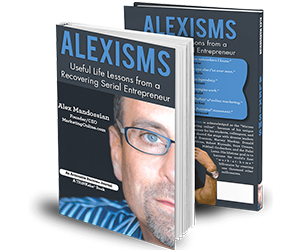Don’t Sell Your Product Until You Do This

What separates a suspect from a prospect?
You!
You are the one they get to know, like and trust.
But that’s a two-way street.
You have to get to know them as well as they have to get to know you before the buying process.
Why?
What if you’ve just had a big product launch but no one’s buying? What do you do?
Ask.
What if you’re trying to figure out if your product will sell?
Ask.
What if you’re trying to improve your business model but can’t figure out how to position yourself?
Ask.
All of these scenarios are relatable to every entrepreneur. And they’re all easily handled with the right amount of the right information.
Not every ‘problem’ is solved by asking your customers.
You don’t go to your market to find out how to build your product. You are the genius behind the creativity.
You don’t go to your market when you’re establishing your message. You go to your market when you’re refining your message.
You don’t go to your market in the early stages of product or service creation. That’s when you need to rally your inner resources and your team. You go to your market when you’ve created the beta model and you’re working out the kinks.
Let’s be clear. You can go to your market any time you want and you’ll get information. But is it the right information? Is it the most effective information?
So there’s a time and a place to ask your market what to do next.
But what do you do with all that information?
Related Post: Give Me As Long As it Takes to Read This Post…
Related Post: What People Find Most Challenging About Selling Their Product
Related Post: 3 Ways to Improve Your Market Research
Another Way to Organize Your Information and Research
Buckets!
Buckets or ‘segmenting’ is a way to organize your market and the information it provides you.
Ryan Levesque has a great story he told in my interview with him and few years back. He and his wife were trying to sell their jewelry online but no one was buying. So he decided to ask his market why they weren’t buying.
What he found out is he was treating his market like one market when in fact it was four different markets.
He was selling to four different markets with a one-size-fits-all message and it wasn’t working.
He realized he needed to learn to segment his market into a system that allowed him to get to know each segment of his list.
Buckets!
So he began to organize his list into sub-lists he called buckets.
Buckets are a great way to organize your market into smaller niches that allow you to target niche appropriately and effectively.
Different Types of Buckets
How did he do this?
When someone new would enter the list he would send them a questionnaire to fill out. This was a longer type of survey that would let him know details about his new customer.
So it wasn’t a one-question survey about his product. It was a long, one-time survey about his new customer. Was he or she male or female? What was their age range? What type of work did they do? etc.
Then he used this information to organize each person into several sub-lists. This is a great way to do your basic ideal customer research.
So you can have a list for people segmented into age ranges. You can organize people according to where they live, what their interests are, what they do for hobbies, etc.
Segmenting your lists into buckets or sub-lists is the most productive way to use the information they are willing to give you.
It allows you to get to know your customer while they’re getting to know you.
But there are specific questions you ask that differ from the standard ideal customer info. Keep reading.
Learn how to talk to your customers. This info gives you the exact words to speak to your customer’s deepest motivations — help them decide to join your premium programs without high pressure tactics.
Help Your Candidates Become Premium Customers Without Rejection!>>
Why Use Segmentation?
Most of my followers and clients are coaches, trainers and speakers. And segmenting works even for them. It’s not just for entrepreneurs who make physical products.
Say you’re a coach and you have a large list of mostly unknown people to you.
Maybe they’ve opt-in, maybe they’ve bought a small service from you in the past but they’re largely unknown to you.
Do you know what they’re looking for by following you or opting-in to your list?
What if you create a productivity webinar but only a quarter of the people on your list attend?
Now let’s say you reach out and start asking specific questions and find out that you have a large contingent of baby boomers on your list. Sounds innocuous until you start to ask and realize that most of these people are successful, have good productivity habits and would be better suited to a different type of webinar?
You can still do your productivity webinar. You adjust your expectations, market the webinar to a small section of your list and have a successful launch because you only targeted a quarter of your list and a quarter of your list showed up!
Now you can begin work on a premium service that targets the successful entrepreneurs that populate another portion of your list.
See how this works?

What Kinds of Buckets Do You Create?
So what kinds of sub-lists or buckets are effective?
There are the traditional types of ways to segment: age, gender, experience, type of work they do, etc. Those are very effective at gathering information.
But there are other ways to segment that are equally effective. And narrow the scope of your information gathering.
Generational Segmenting
Are they a millennial or a baby boomer? This is effective information to have to find out how to speak to different aspects of your market. And what kinds of products to offer.
Buyer Frequency Segmenting
How much money have they spent with you?
Are they a free opt-in or a premium client? Do you have a bunch of looky-loos?
Again, you’re going to speak to each segment differently by looking at buying frequency.
When you’re ready to roll-out a new product or service the frequent buyers are the ones to go to for case studies.
Experience Level Segmenting
An effective way of segmenting if you are a business coach is to rank your customers by experience. Are they a beginner or a veteran?
I like to have 4 buckets for this type of segmentation. This is how I do it:
- Start Up
- Established
- Challenged
- Consultancy
You’ll talk to your start-ups differently than your established entrepreneurs.
You might have a group of entrepreneurs that are having challenges in their businesses. Maybe you can create a 1-day conference that specifically addresses their issues.
This information may lead you to create a structured membership site that targets every group and gives each exactly what they need.
The possibilities and opportunities open up to you with the right information.
Engagement Level Segmenting
Segmenting isn’t just about making money from your market. It’s a symbiotic relationship of knowledge-sharing.
How much does your list engage with you?
You can divide your list into segments based on frequency of engagement: low, mid or high. The high-level engagers are the ones you go to when you’ve got a product launch and you want to get the word out.
What if some of your premium clients are appropriate for JV Partnerships?
See how effective segmenting can be? The most valuable thing about your lists is not how much money you can make off of them. It’s about how intimate you can be with them. How well you get to know them while they’re getting to know you.
If you can harness this information and intimacy it will payoff with a client-base of evangelicals who stick around a long time because they know you are interested and listening.
Related Post: Give Me As Long As it Takes to Read This Post…
Related Post: What People Find Most Challenging About SellingTheir Product
Related Post: 3 Ways to Improve Your Market Research
3 Mistakes to Avoid When Segmenting
1. Only Asking One Time
You can’t begin a lifetime of intimacy with only one question. You need to start an ongoing conversation. You don’t need to email survey after survey and fatigue your lists.
But you do need to keep the conversation going and find specific, important moments to find out what people are thinking, what people want, and why something’s not working.
2. Not Having A Plan for Engagement
Don’t just rock up and ask random questions about someone’s personal life. Create a context so that people are willing to help you get what you need to get.
Everyone wants to be helpful. No one wants to randomly surrender personal information. You need to tell them why you need the information.
“We’re launching a new product and we could really use your input!”
“I saw that you didn’t open the email introduction for my new product. I’d like to find out why and see what I can do to make it right.”
“Thank you for joining my list! I’d love to find out more about you and tell you a little bit more about me.”
Give them an authentic reason to engage with you and they will be generous in their assistance.
3. Being Afraid to Pick Up the Phone
Don’t be afraid to pick up the phone and call your peeps. Especially if you’re a coach or trainer, you probably have a more intimate relationship to the people on your list than other types of entrepreneurs. So don’t be afraid to directly contact them and have a conversation.
After doing this work for 25+ years and having the courage to pick up the phone, I’ve found that those are some of my longest, professional relationships. The people I’ve engaged with in this manner have become my allies, my evangelicals and even JV partners.
So don’t be afraid to get intimate and take it to the next level in your relationship;)
The Wrap Up
Segmenting your lists is imperative to healthy, long-lasting relationships with your prospects and clients.
Not segmenting your lists is a rookie mistake that will cost you thousands of dollars.
Not listening to your customers is one of the biggest mistakes you can make as entrepreneur. And not segmenting your lists is a form of not listening to them.
You need to be responsive. You need to engage. You need to be curious. And then you need to listen.
Do you want to know one other crucial way of segmenting your lists that will help you learn how to engage better with your clients and customers?
Do you already segment your lists?
What segments or buckets do you use to categorize your customers?













